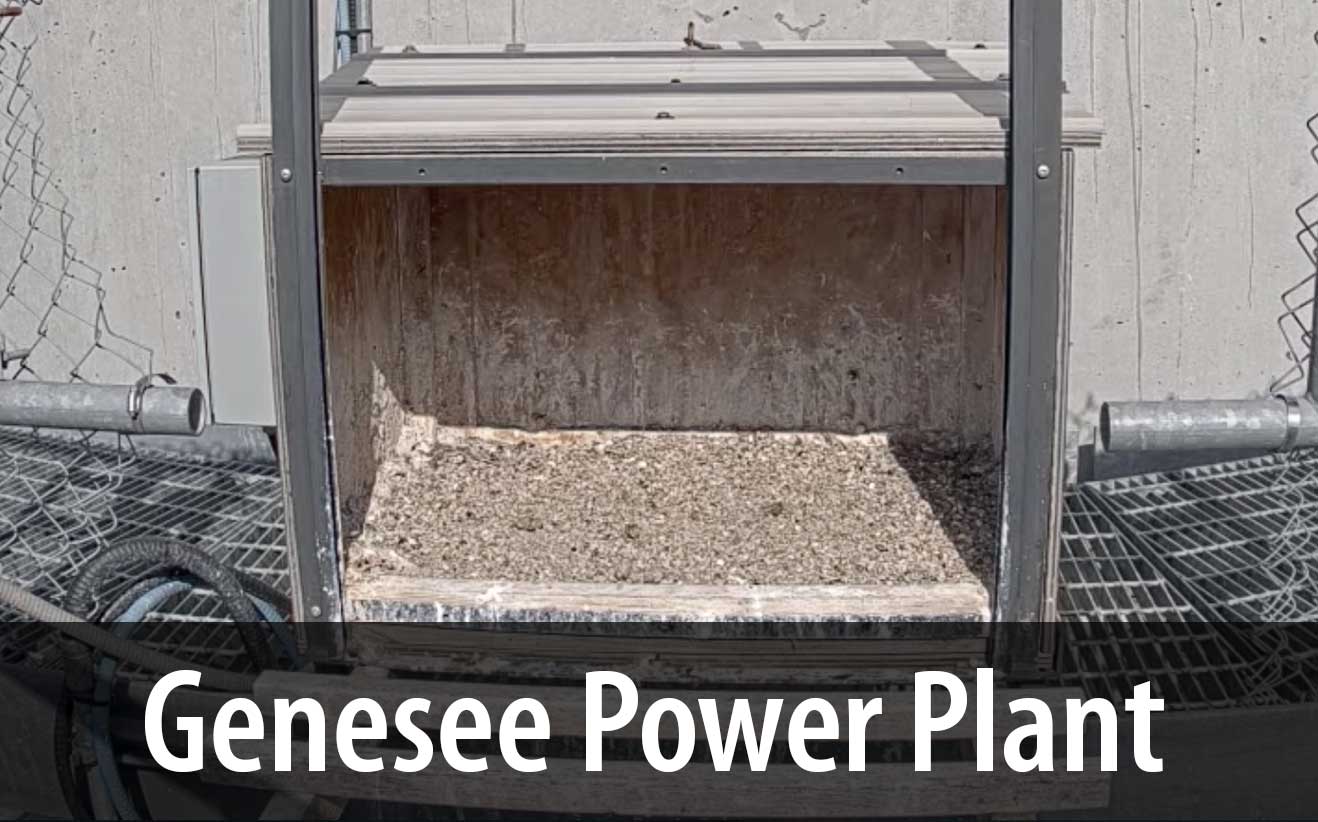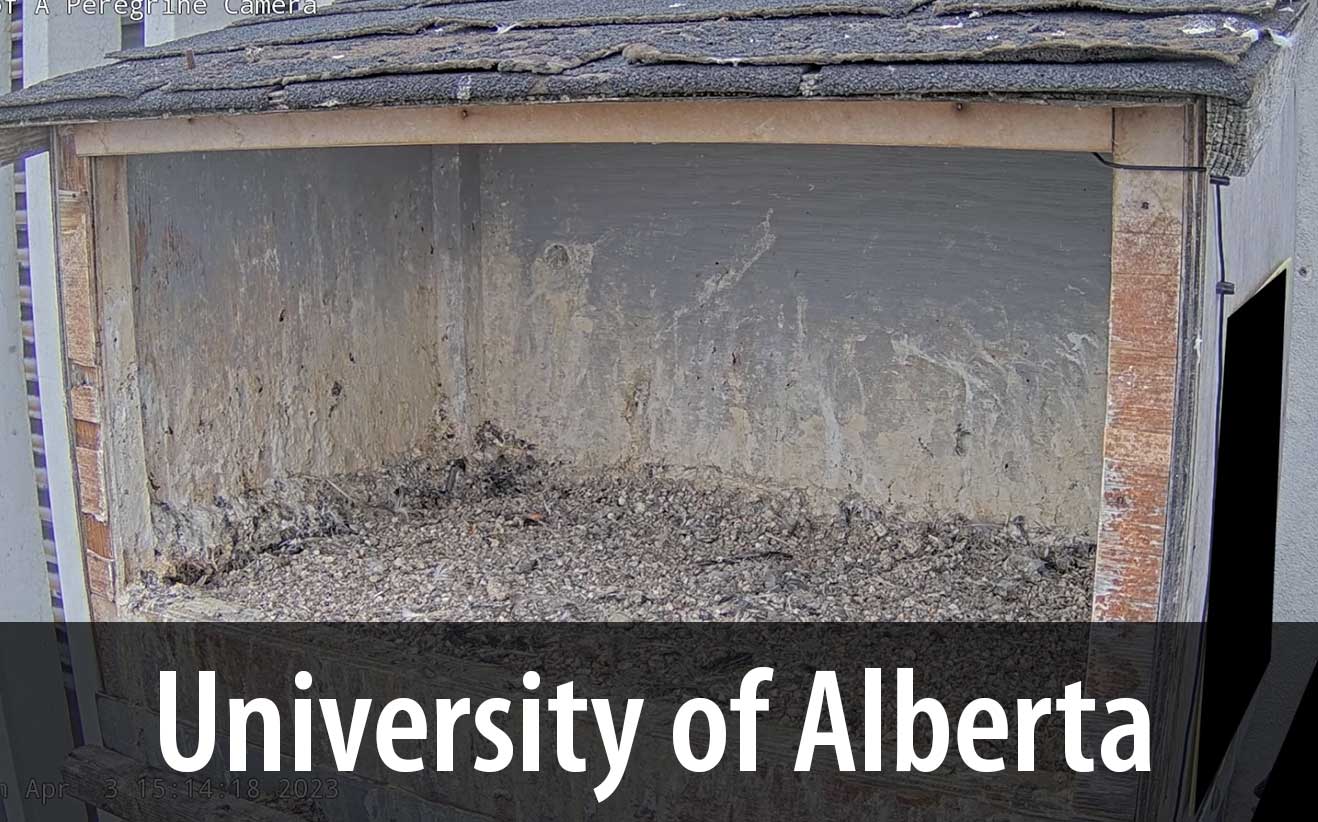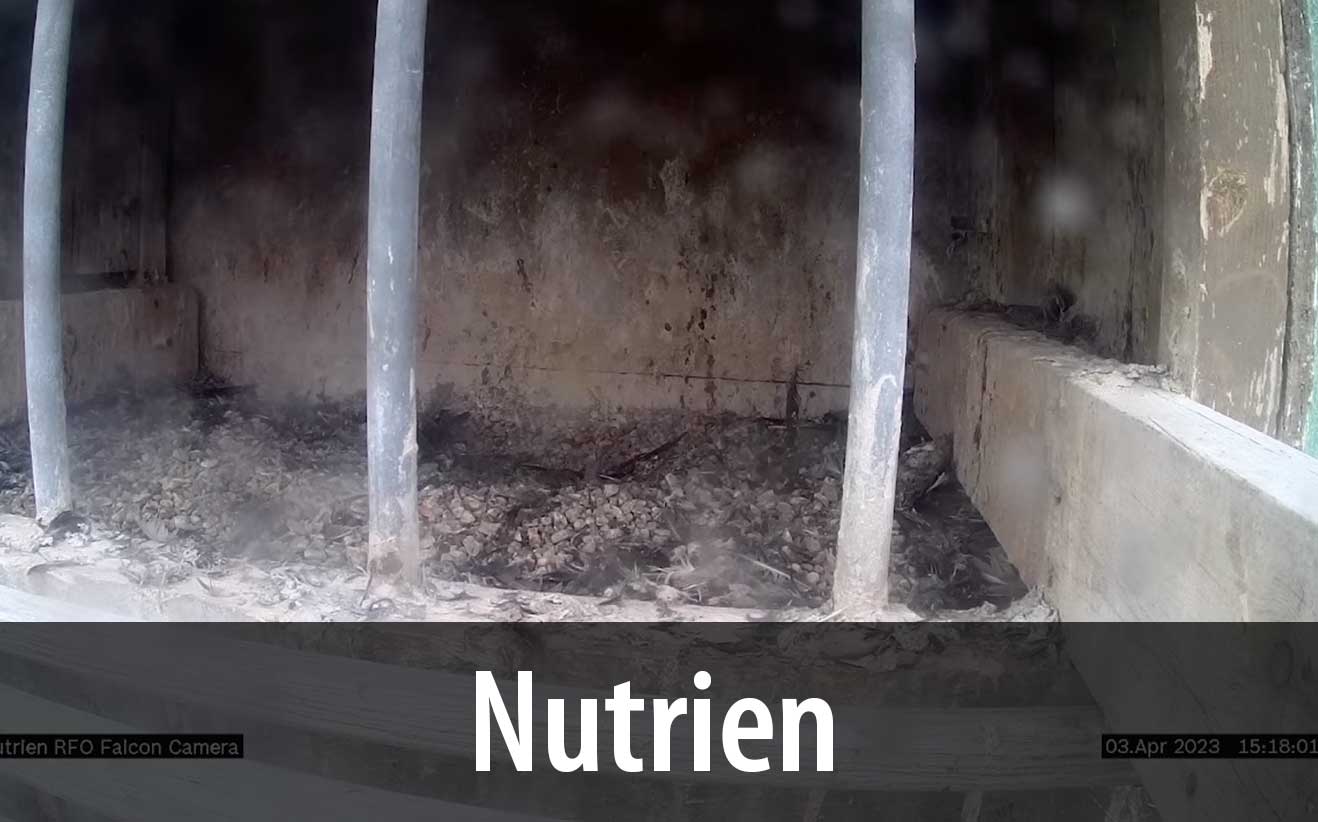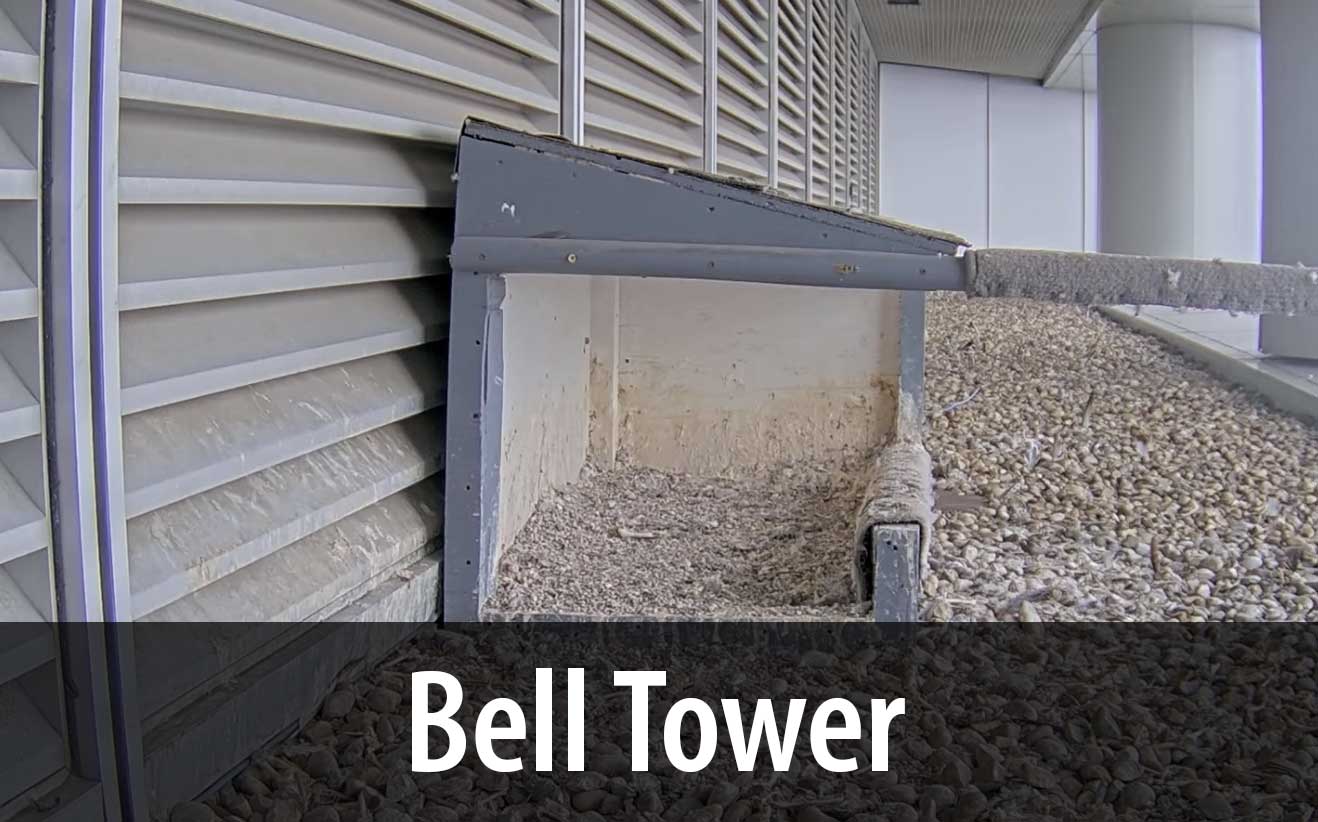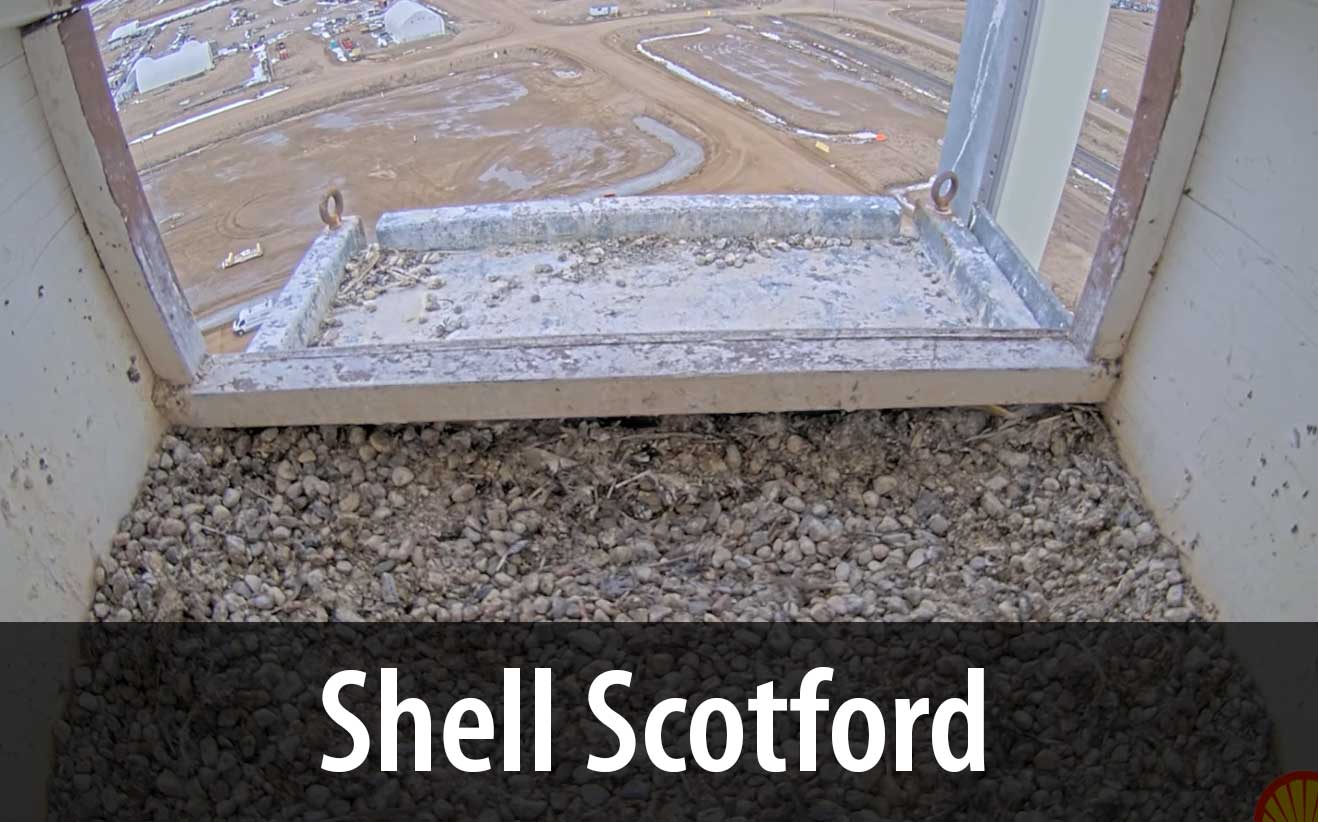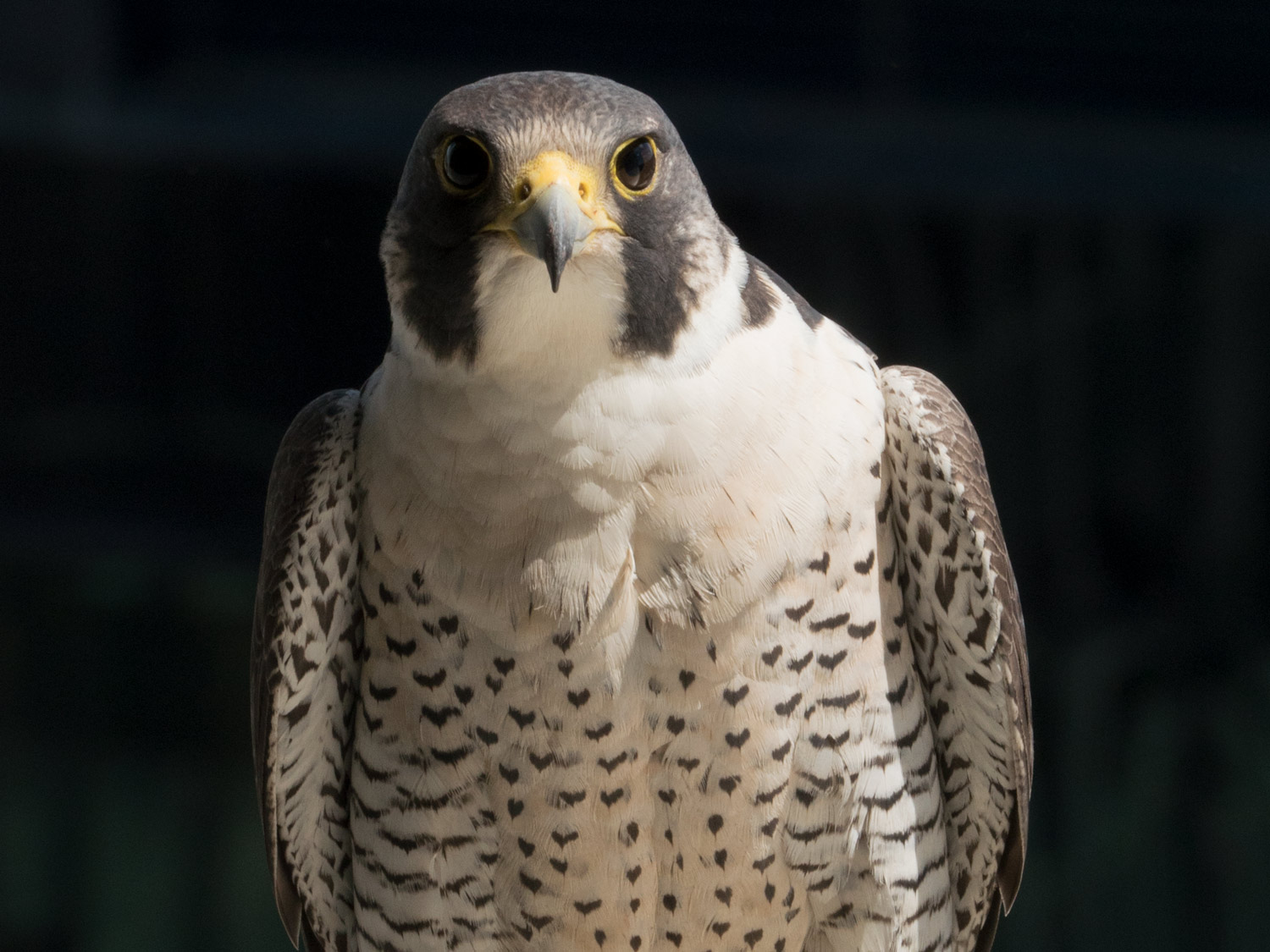2022 Peregrine Cameras
Peregrine Timeline in Edmonton
Battle Phase:
Late March to late April
Birds battle it out, sometimes to the death, for nesting sites (eyries) and mates.
Egg Laying Phase:
Mid-April to early May
Time to settle down and lay eggs. Peregrines usually lay between 3 and 4 eggs. They lay an egg every 2 days, so there can be a difference of 8 days between the oldest and youngest chick. It is not uncommon for the youngest chick in a large clutch to starve and be fed to its siblings. While this sounds terrible, it is a reasonable survival strategy since the adult peregrines don’t have to expend energy catching prey for at least one meal.
Incubation Phase:
May to mid-June
Peregrines incubate their eggs for just over a month before the chicks hatch. The male incubates the eggs for short periods too so that the female can eat.
Chick Phase:
June – July
It's the most vulnerable stage in their adult life—their wings are incredibly powerful, but until they learn to fully harness that power, one false move can mean fatal injury.
Fledgling Phase:
July – early October
After fledging, young peregrines have 6 weeks with their parents. They learn to fly and hunt before they are on their own and get ready to migrate (Edmonton’s peregrines likely spend winters in Brazil and Columbia). Watching them from the cameras is impossible once they fledge, but it’s worth going to their territories in person and watching the adults hunt and sometimes toss prey in midair to their youngsters. These 6 weeks are a vulnerable time for the peregrines as they navigate narrow corridors between Edmonton’s skyscrapers, avoid windows and other obstacles, and sometimes find themselves on the ground unable to get enough lift to fly again. If they’re fortunate, someone will find them in time and notify Fish & Wildlife, who can then get in touch with the right people to get them back onto their nesting ledge for another try.
